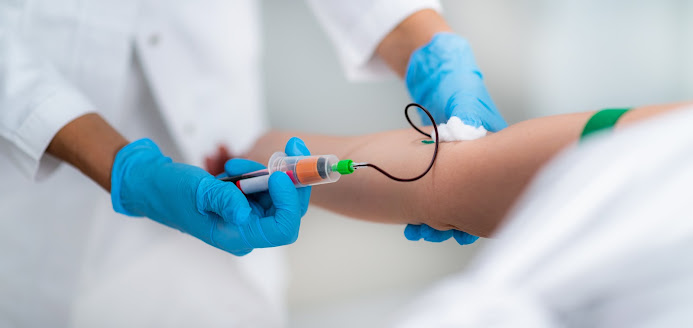Navigating Blood Drawing Labs: What You Need to Know
Blood drawing labs, also known as blood collection centers or phlebotomy labs, play a crucial role in healthcare. Whether for routine screenings, diagnostic tests, or monitoring health conditions, blood draws are a common procedure. Yet, for many, the experience of visiting a blood drawing lab can be intimidating or unfamiliar. In this blog, we'll explore what blood drawing labs are, how they operate, and what to expect during your visit.
Understanding Blood Drawing Labs: Blood drawing labs are facilities where trained professionals, often called phlebotomists, collect blood samples from patients. These samples are then sent to laboratories for analysis. The results of these tests help doctors diagnose illnesses, monitor treatments, and assess overall health.
Key Components of Blood Drawing Labs:
- Staff: Phlebotomists are trained to draw blood safely and efficiently. They are skilled in venipuncture techniques, ensuring minimal discomfort for the patient.
- Equipment: Blood drawing labs are equipped with tools such as needles, syringes, blood collection tubes, and bandages. These instruments are sterilized to maintain hygiene and prevent infection.
- Procedures: Depending on the tests ordered by a healthcare provider, different procedures may be followed for blood collection. These can include fasting requirements, specific positioning during the draw, and the number of tubes needed for sampling.
- Privacy and Comfort: Labs prioritize patient comfort and privacy. Most labs have designated areas for blood draws, ensuring confidentiality and minimizing distractions.
- Safety Protocols: Labs adhere to strict safety protocols to prevent contamination and ensure the integrity of blood samples. This includes proper disposal of used needles and adherence to infection control measures.
What to Expect During Your Visit:
- Appointment Scheduling: Some labs require appointments, while others accept walk-ins. It's advisable to check with the lab beforehand to understand their scheduling policies.
- Preparation: Depending on the tests ordered, you may need to fast for a certain period before the blood draw. Your healthcare provider will provide specific instructions.
- Check-In: Upon arrival, you'll need to check in at the reception desk. You may be asked to provide identification and insurance information.
- Blood Draw: A phlebotomist will escort you to the blood drawing area. They will clean the site, typically the inside of your elbow, with an antiseptic solution before inserting the needle. While some discomfort is normal, it should be brief.
- Post-Draw Care: After the draw, the phlebotomist will apply pressure to the site to stop any bleeding and may place a bandage over it. You'll be advised to keep the area clean and avoid heavy lifting or strenuous activity for a few hours.
Conclusion: Blood drawing labs are essential facilities in the healthcare system, especially with Access Health Care Physicians, facilitating the collection of blood samples for diagnostic purposes. By understanding how these labs operate and what to expect during your visit, you can ensure a smooth experience and accurate test results. Remember to follow any pre-draw instructions provided by your healthcare provider and communicate any concerns with the lab staff. Your cooperation is crucial for promoting overall health and well-being.


.png)

Comments
Post a Comment